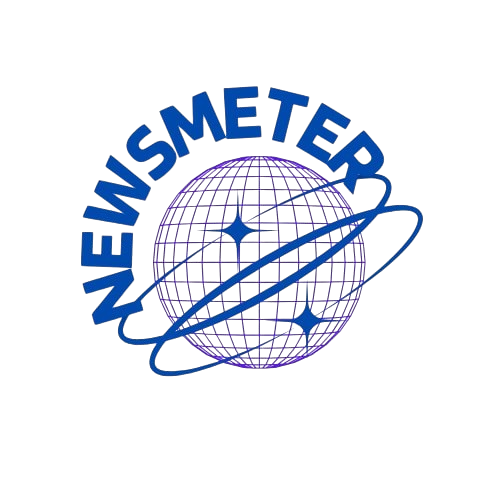In the world of industrial labeling, electrical components, and digital cataloging, alphanumeric codes like CFLop-Y44551/300 often serve as identifiers for highly specific products or technical components. While the code itself may seem cryptic at first glance, decoding it can reveal important information about its function, category, or use in various technical environments. In this blog post, we will explore what CFLop-Y44551/300 might represent, dissect its structure, and discuss potential applications and meanings in different contexts such as electronics, manufacturing, and software systems.
The Anatomy of the Code
Alphanumeric product codes or catalog references are commonly used by manufacturers, suppliers, and engineers to label and track components. Let’s break down CFLop-Y44551/300 step by step:
- CFLop: This segment appears to be a prefix, possibly referring to a product series or category. It could indicate a component type such as a “Capacitor Flop” (hypothetical), a firmware component, or even a module name within a software or hardware infrastructure. Alternatively, “CFLop” might be an acronym, possibly standing for something like Compact Fluorescent Load Operation Panel, though this is speculative without manufacturer context.
- Y44551: This sequence is typically a unique identifier or serial model number. It helps distinguish one component from another in a product line. Such strings are frequently used in manufacturing databases, inventory systems, or service manuals to ensure precision in ordering, repairing, or configuring components.
- /300: The slash followed by a number often denotes a version, capacity, or configuration specification. For instance, it could represent:
- Power rating (e.g., 300 volts)
- Model iteration (e.g., the 300th design)
- Capacity (e.g., 300 units of measure relevant to the component)
The structured format strongly suggests that CFLop-Y44551/300 is part of a cataloging system used for technical or electronic components, much like a SKU (Stock Keeping Unit) or a part number in a logistics system.
Potential Applications in Industry
Even without a direct reference to a real-world database, this code is representative of how parts and modules are referenced in several industries:
1. Electrical and Electronic Manufacturing
In electronics, part codes like CFLop-Y44551/300 are commonly used for identifying small components such as resistors, capacitors, switches, or modules. A manufacturer may assign this to a device with certain voltage tolerances or specific installation requirements. For example, the “/300” might signify that the part is rated for 300 volts or designed for systems operating at 300 watts.
2. Software and Embedded Systems
Sometimes, these identifiers also belong to embedded firmware or circuit modules in computing systems. “CFLop” could be an internal name for a compiled firmware loop or digital processing instruction set. This would make Y44551 a build or compile reference, with 300 being the firmware version or patch number.
3. Supply Chain and Logistics
In the context of inventory management, barcodes and part numbers like CFLop-Y44551/300 allow warehouses and retailers to efficiently store, locate, and dispatch products. A logistics platform would use such codes to avoid confusion and ensure the exact variant of a product is being delivered.
4. Aerospace, Defense, or Automotive Sectors
These industries often use complex part numbers to label intricate components. A single bolt or electronic control unit (ECU) may have a unique designation like CFLop-Y44551/300, ensuring compatibility with specific models or systems.
Importance of Accurate Labeling
Accurate part identification using codes like CFLop-Y44551/300 is crucial in avoiding costly mistakes in engineering, repairs, and logistics. If a technician installs the wrong capacitor or a developer loads the wrong firmware variant, the consequences could include system failure, safety hazards, or production delays. Thus, decoding and understanding these identifiers ensures reliability and efficiency across industries.
How to Find Out the Actual Meaning?
If you come across a code like CFLop-Y44551/300 in a manual, database, or component package, here are a few ways to trace its meaning:
- Manufacturer Website: Input the code in the manufacturer’s search bar or online catalog.
- Datasheets: Technical documents often include part number breakdowns and specifications.
- Support Forums: Engineering forums and Reddit threads sometimes offer peer insight into uncommon codes.
- Contacting Tech Support: Reaching out directly to the supplier or manufacturer can clarify exact functions and compatibility.
Real-World Scenarios of Using Codes Like CFLop-Y44551/300
To further understand the practical relevance of a code such as CFLop-Y44551/300, let’s examine a few real-world scenarios where such identifiers play a critical role.
1. Maintenance and Repair Operations (MRO)
In industrial facilities, equipment downtime is costly. When a specific part like CFLop-Y44551/300 is required for repairs, the maintenance team needs to quickly identify and source the exact component. Having a structured part number reduces delays and ensures compatibility. For example, a technician might search for this exact code in a centralized parts database to reorder it, reducing the risk of receiving an incorrect or incompatible part.
2. Engineering Design and BOMs (Bill of Materials)
Engineers routinely work with extensive BOMs when designing products or machines. Each part in a BOM must be uniquely identifiable to avoid ambiguity during procurement and assembly. If CFLop-Y44551/300 represents a unique sensor or control unit, including it in the BOM ensures the production team knows precisely what to purchase and install, thus maintaining quality control and performance standards.
3. Regulatory Compliance and Safety
Certain industries—like aerospace, medical devices, and automotive manufacturing—must comply with strict regulatory standards. Traceability is essential. If CFLop-Y44551/300 is tied to a critical function in a device, documenting its use can help meet compliance requirements and aid in audits, recalls, or certifications. For example, regulators may demand exact part numbers to validate a product’s safety or conformity to engineering standards.
4. Cross-Referencing and Global Sourcing
Manufacturers often operate across international markets. A code like CFLop-Y44551/300 might be used globally, allowing suppliers and partners in different countries to cross-reference parts accurately. Even if the product name differs in various regions, the code remains constant, making global sourcing and collaboration more efficient. This is especially important in just-in-time manufacturing environments where accurate deliveries are critical to productivity.
5. Software Versioning and System Configuration
In tech and IT environments, particularly those involving embedded systems or programmable hardware, the identifier could serve as a firmware version or system module name. For instance, “CFLop” may be an internal term for a configurable logic block, and “Y44551/300” could denote the firmware build and update number. Engineers maintaining systems over time would rely on such identifiers to ensure the correct firmware is deployed, avoiding system incompatibility or errors.
Why Such Codes Are Intentionally Complex
While CFLop-Y44551/300 might appear complicated, its complexity serves several important purposes:
- Uniqueness: Ensures that no two parts or systems are confused with one another.
- Compactness: Conveys detailed product or version information in a concise string.
- Cross-platform utility: Makes it easy to reference the item in databases, barcodes, or ERP systems.
- Security: In cases involving proprietary technology, using codes instead of plain names protects intellectual property.
Interpreting Similar Alphanumeric Codes
If you’re frequently encountering codes like CFLop-Y44551/300 in your work or research, developing the skill to interpret them becomes valuable. Here’s a general approach:
- Prefix (e.g., CFLop): Often indicates the product family or function.
- Middle sequence (e.g., Y44551): May be a unique serial number, part ID, or model variant.
- Suffix or trailing value (e.g., /300): Usually denotes configuration, versioning, capacity, or rating.
Once familiar with a particular manufacturer or industry’s naming conventions, you can often decode new identifiers with ease. Documentation, training materials, or internal style guides often offer explanations for these formats.
The Importance of Documentation
Because codes like CFLop-Y44551/300 can mean vastly different things depending on context, thorough documentation is essential. Organizations must maintain up-to-date technical sheets, internal databases, and user manuals to help employees, vendors, and clients interpret these codes correctly. Without documentation, even the most structured code becomes a source of confusion.
Good documentation should include:
- A glossary of part prefixes
- A mapping of serial numbers to components
- Version histories or changelogs
- Cross-reference tables for regional or supplier-specific variants
This is especially helpful in large organizations or multi-vendor ecosystems, where team members may not have detailed knowledge of every product line.
A QUick Summary
While CFLop-Y44551/300 may appear to be just another random code, it represents a well-structured system used across industries for identification, classification, and traceability. Whether it refers to a specialized electronic component, a firmware module, or a machine part, such codes are designed to deliver precision in environments where accuracy and reliability are non-negotiable.
Understanding these alphanumeric identifiers equips professionals—whether engineers, technicians, IT specialists, or supply chain managers—with the ability to interpret, troubleshoot, and manage products and systems more effectively. As industries continue to become more digitized and interconnected, the importance of standardized coding systems like CFLop-Y44551/300 will only grow.
If you ever come across this specific code in your work, now you know it’s not just a random string—it’s a carefully crafted key to a deeper technical narrative.
Conclusion
While CFLop-Y44551/300 may not immediately reveal its meaning without a manufacturer’s database or official documentation, its structured format follows the conventions used in multiple technical industries. Whether it’s identifying a circuit component, managing inventory, or patching software, such codes are indispensable tools in maintaining accuracy, safety, and functionality. If you encounter this specific code in your work or studies, treat it as a unique fingerprint pointing toward a very precise item or module—one that plays a small but vital role in a larger system.
Understanding these codes empowers professionals across fields to work smarter and more effectively in environments where precision is paramount.
For more, continue to read at newsmetre.com














